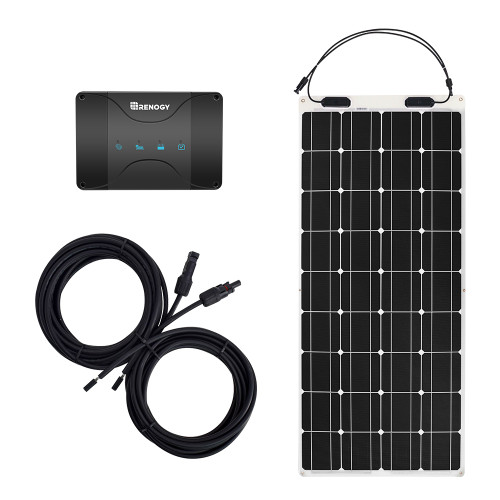You don't need anything but the solar panel, charge controller, and enough wire to reach the battery. If there are separate batteries (not used together as one "bank") then an additional controller is needed for each. Multiple controllers can be powered from one panel.
Controllers are rated by power (wattage). You'll see the lowest power ones called maintainers because they are meant to keep a small maintenance charge under 5 Amps (which at 12V=60 Watts). The controller power rating should match or exceed the panel's.
For maintaining a single battery when not in use, like on the trailer, 10W panel would be more than enough. To recharge after a weekend stay and be at full charge by next weekend, that needs a bit more thought.
Ballpark: battery holds 100AH of charge and you use half of that over the weekend using the radio and a light, so you want to replace 50AH in 5 days or 10/day. Given 5 hours of full sun, you'd be getting twice what you need from a 50W panel. This is very rough and weather, efficiencies, etc. all play a role.
My suggestion: you can't go wrong with the Battery Tender and any brand 50W panel found on Amazon or wherever. Solar panels are relatively cheap, though, so if you want just get the biggest one that fits your boat and budget, wire it to a matching controller and be on your way.
Caveat: as mentioned earlier, care should be given to the power requirements of the bilge pump. If you use half the battery capacity Sat. and Sun. there won't be a lot of remaining capacity in case it rains Mon-Fri. If that's a concern then consider adding a second (house) battery instead of trying to compensate with more solar. Or just run the engine before leaving

[edit] I see you already have 2 batteries. 50W panel and 2 controllers is all you need. Re: the bilge, if you want real peace of mind add a second bilge pump powered from the other battery with its switch mounted a few inches higher than the other with an audible alarm. Multiple redundancies is always good.



